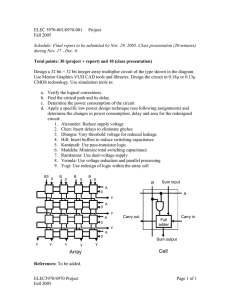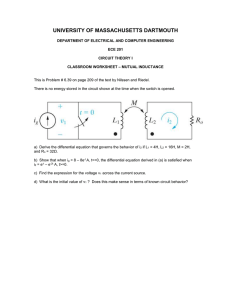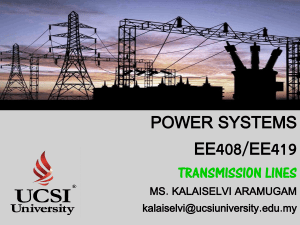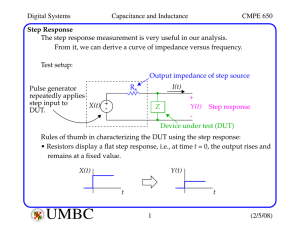Unit 3 - Electrical and Computer Engineering
advertisement
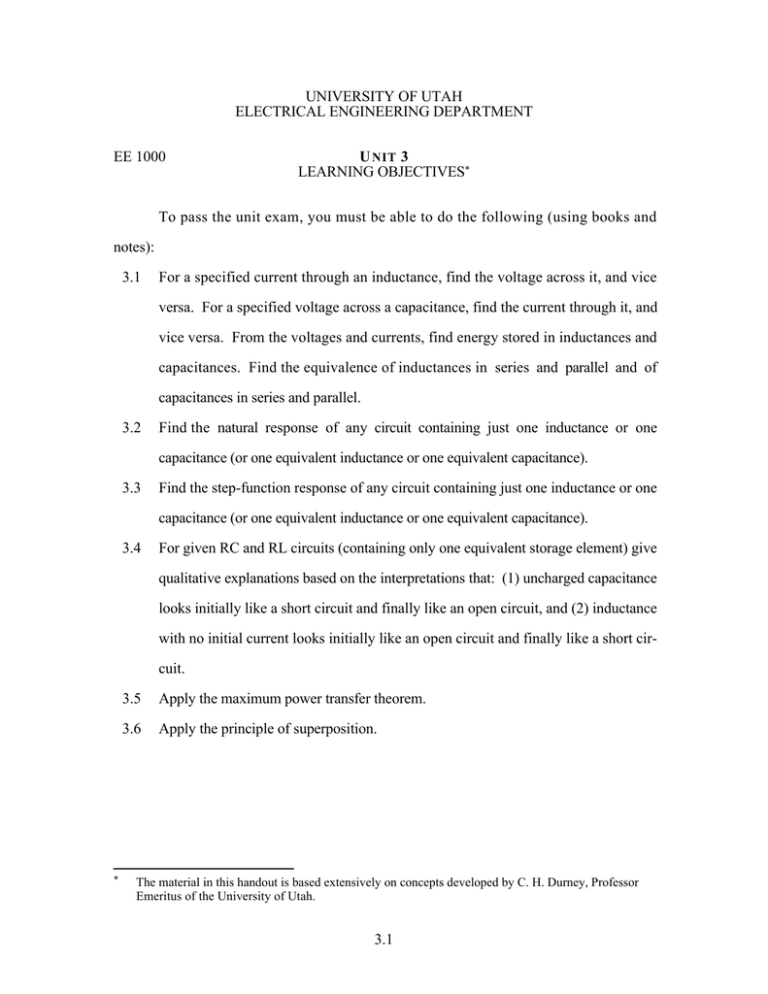
UNIVERSITY OF UTAH ELECTRICAL ENGINEERING DEPARTMENT EE 1000 U NIT 3 LEARNING OBJECTIVES* To pass the unit exam, you must be able to do the following (using books and notes): 3.1 For a specified current through an inductance, find the voltage across it, and vice versa. For a specified voltage across a capacitance, find the current through it, and vice versa. From the voltages and currents, find energy stored in inductances and capacitances. Find the equivalence of inductances in series and parallel and of capacitances in series and parallel. 3.2 Find the natural response of any circuit containing just one inductance or one capacitance (or one equivalent inductance or one equivalent capacitance). 3.3 Find the step-function response of any circuit containing just one inductance or one capacitance (or one equivalent inductance or one equivalent capacitance). 3.4 For given RC and RL circuits (containing only one equivalent storage element) give qualitative explanations based on the interpretations that: (1) uncharged capacitance looks initially like a short circuit and finally like an open circuit, and (2) inductance with no initial current looks initially like an open circuit and finally like a short circuit. * 3.5 Apply the maximum power transfer theorem. 3.6 Apply the principle of superposition. The material in this handout is based extensively on concepts developed by C. H. Durney, Professor Emeritus of the University of Utah. 3.1 EE 1000 References: 3.1 UNIT 3 STUDY GUIDE Sections 6.1-6.3, 7.1-7.4, and 4.12-13 in the textbook. a. Study Sections 6.1-6.3; work the drill exercises and examples. b. Work Probs. 6.4, 6.5, 6.14, and 6.17 in the text. 3.2 a. Study Sections 7.1 and 7.2; work the drill exercises and examples. b. Work Probs. 7.4-7.6, 7.15, 7.22, 7.24, and 7.30. 3.3 a. Study Sections 7.3 and 7.4; work the drill problems and exercises. b. Work Probs. 7.33, 7.34, 7.42, 7.50, 7.52, 7.53, and 7.58. 3.4 Based on the interpretation that an uncharged capacitance initially looks like a short circuit and finally like an open circuit, give a qualitative description of the current i in Fig. 3.1. S Answer: When the switch is 1 kΩ ° first closed, C looks like a t=0 short circuit. Hence at t = 0+ , 15 V i can be found from voltage division to be 5 mA. 1 kΩ + – i 1 kΩ C 1 kΩ As t → ∞, C begins to look like an Fig. 3.1 open circuit, in which case i can again be found from current division to be i = 3 mA. Thus the asymptotic value of i is 3 mA. Consequently, i decreases smoothly from an initial value of 5 mA to a final value of 3 mA at a rate that depends on the time constant, Rt C 2, where Rt is the Thevenin equivalent resistance across C. For a small value of C, the decay will be fast; for a larger value of C, the decay will be slower. 3.2 3.5 a. Study Section 4.12; work the example and drill exercises. b. Work Problems 4.75, 4.77, 4.79, 4.81 and 4.82. 3.6 a. Study Section 4.13; work the example and drill exercises. b. Work Problems 4.87-4.90, and 4.92. 3.3
